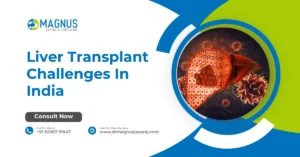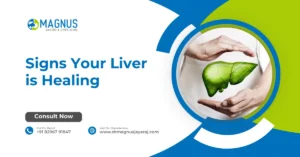Fatty liver disease refers to the buildup of fat in the liver cells, a condition also known as hepatic steatosis. It is often classified into two types: non-alcoholic fatty liver disease (NAFLD) and alcoholic fatty liver disease. One of the more concerning forms is NASH disease, or non-alcoholic steatohepatitis, which can cause inflammation and liver damage. While many people with fatty liver disease may not experience noticeable symptoms, others may suffer from fatigue, abdominal discomfort, and more serious complications.
Early detection is crucial because without treatment, fatty liver disease can progress to liver cirrhosis, liver failure, or even liver cancer. Understanding what fatty liver disease is, its symptoms, causes, and risks is key to managing it effectively. Treatment options are available, including medications and lifestyle changes like diet and exercise. In this article, we’ll discuss the symptoms, causes, and treatment options for fatty liver disease, as well as its types, diagnosis, and possible complications.
What is Fatty Liver Disease?
Fatty liver disease is a condition where excess fat builds up in the liver, affecting its normal function. It can be caused by obesity, diabetes, alcohol consumption, or poor lifestyle habits. Often silent in early stages, it may progress to inflammation, scarring, or cirrhosis if untreated. Timely lifestyle changes and medical care can prevent complications.
Types
Fatty liver disease is divided into two main types:
- Non-Alcoholic Fatty Liver Disease (NAFLD): This is the most common form of fatty liver disease and occurs in people who do not drink excessive alcohol. NAFLD may progress to a more severe form called NASH (non-alcoholic steatohepatitis), which causes inflammation and liver damage.
- Alcoholic Fatty Liver Disease: This form is caused by excessive alcohol consumption. Over time, alcohol damages the liver, leading to fat accumulation and liver inflammation.
Both forms can lead to cirrhosis, liver failure, or liver cancer if not properly managed. However, NAFLD is more common and is often associated with obesity, diabetes, and poor diet. NASH is considered a more severe form of fatty liver disease, as it involves liver inflammation and can cause lasting damage if left untreated.
Both types of fatty liver disease can be managed with lifestyle changes and medications, and early detection can help prevent complications. Regular monitoring is essential, especially if the condition progresses to NASH disease.

Symptoms
- Mild and unnoticed symptoms: Fatty liver disease often develops silently in its early stages. Common fatty liver disease symptoms include constant fatigue, unexplained weight gain, or discomfort in the upper right abdomen. These subtle changes often go undetected, leading to progression without medical attention.
- Impact on women’s health: Gender-specific issues make fatty liver symptoms in females slightly different. Women may notice irregular menstrual cycles, hormonal imbalances, or increased abdominal fat. These variations make early detection important to prevent worsening of the disease.
- Advanced stage complications: If the disease progresses, more severe symptoms appear. Patients may develop jaundice (yellowing of the skin and eyes), swollen legs or abdomen due to fluid retention, or cognitive issues caused by toxin buildup in the blood. At this stage, is fatty liver dangerous becomes a pressing concern.
- Effects on longevity: Without treatment, advanced fatty liver can lead to cirrhosis or liver failure. This significantly reduces life expectancy with fatty liver disease, particularly if combined with other conditions like diabetes or heart disease. Early recognition of symptoms and lifestyle changes can prevent progression, ensuring better long-term health outcomes.
Causes
- Unhealthy diet and obesity as major triggers: One of the primary causes of fatty liver disease is poor eating habits combined with obesity. High intake of refined carbohydrates, fried foods, and sugary beverages increases fat storage in the liver. Over time, this fat buildup damages cells, leading to inflammation and scarring. Obesity-related metabolic syndrome is strongly linked with fatty liver progression.
- Alcohol and chemical exposure: Excessive alcohol use remains a common cause of liver fat accumulation. Even in non-drinkers, certain toxins, medications, and prolonged chemical exposure can impair liver function, leading to fat deposition. Alcoholic fatty liver disease progresses faster if left unmanaged.
- Metabolic and hormonal imbalance: Conditions such as type 2 diabetes, high cholesterol, and polycystic ovary syndrome (PCOS) cause insulin resistance. This resistance forces the liver to store more fat, aggravating the disease. In women, hormonal changes amplify fat storage, worsening fatty liver symptoms in females.
- Genetics and sedentary lifestyle: Family history of liver disease and prolonged inactivity are often overlooked but play significant roles. Genetic predisposition increases vulnerability, while lack of exercise reduces fat metabolism. These factors combined highlight why early interventions are critical when evaluating life expectancy with fatty liver disease.
Diagnosis
- Routine blood tests: The first step in diagnosing fatty liver disease is usually a liver function test. Elevated liver enzymes indicate inflammation or stress. However, abnormal results alone are not enough to confirm the condition, making additional tests essential.
- Imaging techniques: Ultrasound is a standard tool for detecting fat deposits in the liver. CT scans and MRI provide more detailed images, helping doctors assess the severity of fat accumulation. These non-invasive tests also track changes during fatty liver disease treatments.
- Liver biopsy for precision: In cases where imaging and blood results are inconclusive, a biopsy is performed. A small liver tissue sample is analyzed under a microscope to check for fat, inflammation, and fibrosis. This test is critical for predicting disease progression and assessing life expectancy with fatty liver disease.
- Evaluation of risk factors: Doctors also consider patient history, lifestyle habits, and underlying conditions like obesity or diabetes. Special attention is given to fatty liver symptoms in females, as hormonal influences can complicate diagnosis. Together, these diagnostic methods confirm not only the presence but also the severity of the disease, guiding effective interventions.
Risk Factors
Several risk factors increase the likelihood of developing fatty liver:
- Obesity: Excess fat in the body, particularly abdominal fat, increases the risk of fatty liver disease.
- Diabetes: People with diabetes or prediabetes are at a higher risk of developing NAFLD or NASH.
- High Blood Pressure: Hypertension can contribute to liver fat buildup.
- High Cholesterol or Triglycerides: Elevated levels of fats in the blood can lead to fat accumulation in the liver.
- Age: The risk of fatty liver disease increases with age.
- Family History: A family history of liver disease or diabetes may raise the risk.
- Sedentary Lifestyle: Lack of physical activity is a contributing factor.
A healthy lifestyle, including weight management, regular exercise, and a balanced diet, can reduce the risk of fatty liver disease. Early detection through regular check-ups is key to managing and preventing the progression of fatty liver into more severe conditions.
Treatment
There are several treatment options for fatty liver, focusing on lifestyle changes and medication:
- NAFLD Medication: Although there is no specific medication for fatty liver, doctors may prescribe medications to help control blood sugar, cholesterol, or blood pressure, which are often associated with fatty liver.
- Lifestyle Modifications: Losing weight, improving diet, and increasing physical activity are the most effective ways to treat fatty liver. Even a small amount of weight loss (5-10%) can reduce liver fat.
- Nutritional Supplements: Certain supplements, like vitamin E and omega-3 fatty acids, may help reduce inflammation in the liver.
- Monitoring and Regular Check-ups: Regular liver function tests and ultrasounds can help monitor the condition and prevent further damage.
Treatment for fatty liver disease is tailored to each individual based on the severity of the condition and the presence of other health issues like diabetes or hypertension. It’s essential to follow your healthcare provider’s guidance on treatment and lifestyle changes to prevent complications.
Complications
If left untreated, fatty liver can lead to severe complications:
- Liver Cirrhosis: Chronic inflammation and scarring of the liver tissue can occur, eventually leading to liver failure.
- Liver Cancer: Fatty liver disease, especially post-transplant care, increases the risk of developing liver cancer.
- Fatigue: As the liver’s ability to function declines, it may cause extreme fatigue.
- Fluid Retention: The liver may struggle to remove toxins, leading to fluid buildup in the abdomen and legs.
- Varices: Swollen veins in the esophagus, which can rupture and cause life-threatening bleeding.
Detecting fatty liver early and making lifestyle changes can help prevent these complications. Regular monitoring and medical treatment may also be necessary, especially if the disease progresses to cirrhosis or liver cancer.
Prevention and Reversal of Fatty Liver
- Reversal and long-term management: Early diagnosis gives patients the chance to completely reverse fatty liver. Avoiding alcohol, lowering sugar intake, and consistent monitoring are vital. These preventive measures not only improve the quality of life but also extend life expectancy with fatty liver disease. Over time, combining medical and natural approaches ensures sustained liver health and prevents complications.
- Adopting lifestyle modifications: Prevention begins with exercise and a balanced diet. Regular physical activity reduces liver fat, while a diet rich in fruits, vegetables, and lean proteins supports liver function. Weight loss of even 7–10% improves liver health and is considered the cornerstone of fatty liver disease treatments.
- Medication and clinical support: While no direct cure exists, doctors may prescribe medicines to control cholesterol, blood sugar, or liver inflammation. Combined with lifestyle changes, these treatments slow progression and prevent cirrhosis. Addressing root causes ensures that patients no longer ask, is fatty liver dangerous, since risks are minimized.
- Targeting gender-specific factors: For women, addressing hormonal imbalances alongside lifestyle modifications is essential. Treating conditions like PCOS or managing menopause symptoms helps control fatty liver symptoms in females, improving long-term liver health.
When should I see my doctor?
- If you experience persistent fatigue, unexplained abdominal discomfort, or long-lasting digestive issues, schedule an evaluation. These symptoms may signal early liver involvement or metabolic concerns that benefit from timely assessment.
- Jaundice, dark urine, pale stools, or severe itching indicate impaired liver function. These warning signs require prompt medical attention to prevent disease progression and serious complications.
- Individuals with obesity, type 2 diabetes, high cholesterol, or high blood pressure should undergo routine liver health checks. These metabolic risks significantly increase the chance of fatty liver disease and future liver damage.
- Life expectancy with fatty liver disease can vary depending on early detection and treatment. People diagnosed at an early stage often maintain a normal lifespan when lifestyle changes and medical care are followed.
- Sudden abdominal swelling, confusion, or easy bruising are red flags for advanced liver damage. Seek immediate medical care, as these symptoms may be associated with cirrhosis or liver failure.
Conclusion
Fatty liver disease is a common condition that can range from harmless fat buildup in the liver to more serious complications like cirrhosis or liver cancer. Early detection and intervention are key to managing the condition and preventing progression. Whether caused by alcohol consumption or poor diet, the disease can be managed through lifestyle changes, medications, and regular monitoring. If you are at risk, it’s crucial to take steps to manage your weight, control your blood sugar, and maintain a healthy diet.
Also read: Best Herbs For Fatty Liver.




